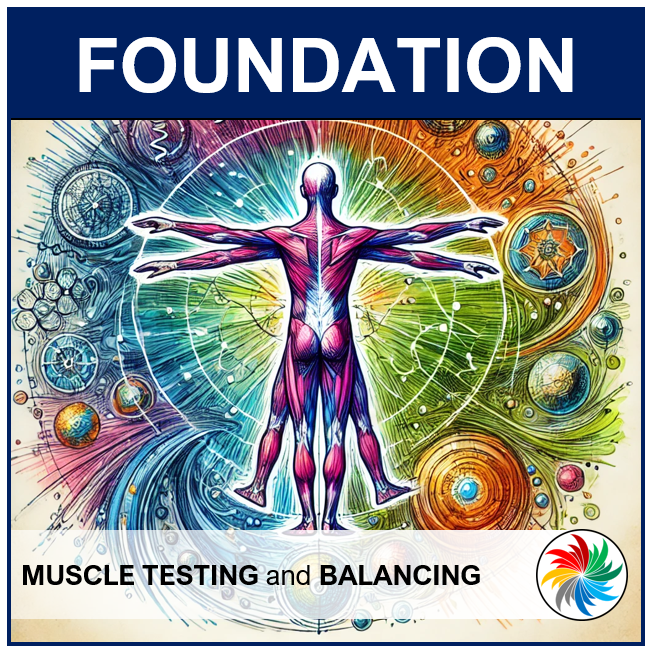
This level focuses on mastering the 42-muscle balance. It deepens the understanding of posture and energy dynamics. It utilizes specialized techniques for emotional and physical stress release.
At the end of Level 4, you will be able to:
- Balance 42 muscles, either standing or using extra balancing methods, including sound.
- Relieve emotional and physical stress held in the posture.
- Understand the theory of Acupressure Holding Points.
- Use a technique to relieve simple pain and handle jet lag.
- Use the principles of reactive muscles to improve poor posture.
- Have the prerequisite skills for more advanced Kinesiology studies.
- Have a demonstrable understanding of all the course content.
- Be able to demonstrate and apply, with the required competency and knowledge, all the techniques presented.
Core Concepts:
42-Muscle Balance: Comprehensive testing and balancing of 42 muscles in standing or lying positions. Addresses dynamic posture, muscle interrelations, and long-term energy stability.
Acupressure Holding Points Theory: Advanced use of holding points to tonify or sedate energy flow based on the Law of Five Elements. Integrates mother/daughter (Shen) and grandmother/grandchild (Ko) cycles for precise corrections.
Figure-Eight Energy: Balances unique energy patterns described in Tibetan medicine. Improves joint mobility, healing time, and general well-being through figure-eight corrections.
Postural Stress Release: Focuses on relieving physical and emotional stress held in the posture. Identifies and corrects postural imbalances using advanced reactive muscle techniques.
Sound and Five Element Balance: Incorporates sound to release emotional blockages and balance meridian energy. Align specific emotions and sounds with each element (e.g., shouting for anger in Wood, laughing for joy in Fire).
Luo Points: Connect paired meridians within the same element to redistribute energy effectively.
Time of Day Balance: Adjusts energy flow based on the body’s natural meridian clock, optimizing performance and recovery.
Key Techniques and Applications:
42-Muscle Testing and Balancing: Systematically evaluates all major muscle groups. Balances using techniques such as neurolymphatic and neurovascular stimulation, meridian tracing, and origin/insertion correction.
Sound Therapy: Encourages vocal expressions (e.g., groaning, laughing) aligned with Five Elements to resolve suppressed emotions and restore energy.
Postural Analysis: Evaluates deviations from ideal posture using visual markers and muscle testing. Corrects imbalances to enhance structural alignment and reduce strain.
Reactive Muscle Corrections: Identifies and rebalances muscles that interfere with optimal movement patterns and posture.
Emotional and Physical Stress Release: Defuses stress from past trauma using ESR techniques integrated with Five Element theory.
Advanced Energy Techniques: Uses circuit-retaining modes to hold energy patterns during corrections. Balances energy across superficial and deep layers using pulse and meridian testing.
Practical Applications:
Advanced Goal Setting: Adds emotional and sensory dimensions to goals for enhanced alignment during energy balancing.
Pain and Fatigue Management: Reduces chronic and acute pain through advanced neurolymphatic release and energy techniques.
Improved Coordination and Gait: Refines dynamic posture and movement through advanced muscle corrections.
Stress and Energy Optimization: Adjusts the body’s energy systems for specific times or environmental conditions, such as jet lag or shift work.
Training and Assessment:
Level 4 is a 15-hour course with a balance of theoretical instruction, practical application, and competency assessments. Emphasizes proficiency in the 42-muscle balance and comprehensive understanding of kinesiology principles and techniques.
Prepares students for advanced kinesiology studies.
